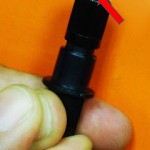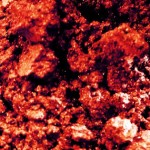For most chip carving projects, you are typically cutting very small chips in a soft wood, such as basswood, butternut or pine. By combining just few basic incised shapes, you can create an array of intricate and beautiful decorative patterns. Read more »
Sealing Basswood Carvings
Some woods are very absorbent. Basswood is one of those woods. Because of its absorbency, it should be sealed before staining. If you don’t seal it, don’t be surprised if some parts of the carving absorb more stain than other parts, resulting in a blotchy appearance. Read more »
Puckering & Tunneling Tape
Tunneling of the application tape off of the release liner can cause sign makers headaches – especially when the graphics are rolled and shipped to a customer across the country. Here’s the problem. If the tape tunnels on the release liner, it can travel over the graphic. When this happens, it is virtually impossible for […] Read more »
Spot Varnish in Sign Design
Commercial printers use a printing technique called spot varnish. It’s a technique that they have used forever. The term refers to a printing a coating of varnish onto selects parts of a design. Usually the varnish is glossy. But it doesn’t have to be. Spot varnish can also be matte or satin. Whether the varnish […] Read more »
Paste Wax: the Finishing Touch

A final application of paste wax is a popular way put a shine on a dull finish. Using a colored paste wax is also effective in disguising any imperfections on the surface of a woodcarving or on a piece of furniture. You can apply paste wax over a variety of other finishes, including varnish, shellac […] Read more »
How Vehicle Surveys Save Time & Money
On-site inspections and vehicle wraps Early in the sales process, before a quotation request is submitted, before the design begins, and before anyone signs on the dotted line, the sales person should conduct a thorough inspection of the vehicles. Vehicle wrapping is business of details. There are so many variables in designing, manufacturing and installing […] Read more »
Painting Acrylic Signs
The extraordinary clarity of acrylic sheet makes it an excellent substrate for backlit signs, which is why it remains the product of choice. Acrylic is typically painted in reverse on the second surface of the sheet. Acrylic provides tremendous protection from the degrading effects of UV light. A number of different paints are available for […] Read more »
Tips for Cutting Flock Material

If you want to provide your customers the rich look of an embroidered emblem, but the cost of embroidery is too rich for their blood, consider using RTape’s VelCut™ flock material. This velvety soft material is a great alternative at a fraction of the cost. Flock heat transfer appliques are cut in reverse (mirror image). […] Read more »
Introduction to Acrylics
Acrylic sheet has been on the market for more than 75 years, ever since Rohm & Haas introduced it as Plexiglas® in 1936. Yet, as commonplace as acrylic is, its chemistry has evolved. Sheet manufacturers typically modify the Poly Methyl Methacrylate (PMMA) with additives to change the performance properties of the plastic. Today, a wide […] Read more »
Safely Working with Pigment Powders

Making your own paint is a relatively easy process. All you need is powdered pigment and a binder. Depending on the type of paint you are making, you have a variety of choices for a binder, including linseed oil, acrylic emulsion, egg yolk and animal hide glue. The one ingredient that is common in all […] Read more »


